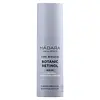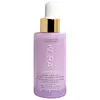What's inside
What's inside
 Key Ingredients
Key Ingredients

 Benefits
Benefits

 Concerns
Concerns

 Ingredients Side-by-side
Ingredients Side-by-side

Betula Alba Juice
AstringentGlycerin
HumectantSimmondsia Chinensis Seed Oil
EmollientPentylene Glycol
Skin ConditioningPolyglyceryl-6 Stearate
EmollientCetearyl Alcohol
EmollientPropanediol
SolventDicaprylyl Carbonate
EmollientAstrocaryum Murumuru Seed Butter
EmollientGossypium Herbaceum Seed Oil
Skin ConditioningIsoamyl Laurate
EmollientBidens Pilosa Extract
HumectantAroma
Polyglyceryl-6 Behenate
Emulsion StabilisingLinum Usitatissimum Seed Oil
PerfumingCellulose
AbsorbentWater
Skin ConditioningHippophae Rhamnoides Fruit Extract
Skin ConditioningLactic Acid
BufferingXanthan Gum
EmulsifyingRhodomyrtus Tomentosa Fruit Extract
HumectantCaprylic/Capric Triglyceride
MaskingRosa Canina Fruit Oil
EmollientHydrolyzed Hyaluronic Acid
HumectantOctyldodecanol
EmollientSodium Hyaluronate
HumectantPigment Violet 19
Sodium Phytate
Irvingia Gabonensis Kernel Butter
Skin ConditioningHydrogenated Coco-Glycerides
EmollientSilica
AbrasiveKaolin
AbrasiveTocopherol
AntioxidantLimonene
PerfumingLinalool
PerfumingBetula Alba Juice, Glycerin, Simmondsia Chinensis Seed Oil, Pentylene Glycol, Polyglyceryl-6 Stearate, Cetearyl Alcohol, Propanediol, Dicaprylyl Carbonate, Astrocaryum Murumuru Seed Butter, Gossypium Herbaceum Seed Oil, Isoamyl Laurate, Bidens Pilosa Extract, Aroma, Polyglyceryl-6 Behenate, Linum Usitatissimum Seed Oil, Cellulose, Water, Hippophae Rhamnoides Fruit Extract, Lactic Acid, Xanthan Gum, Rhodomyrtus Tomentosa Fruit Extract, Caprylic/Capric Triglyceride, Rosa Canina Fruit Oil, Hydrolyzed Hyaluronic Acid, Octyldodecanol, Sodium Hyaluronate, Pigment Violet 19, Sodium Phytate, Irvingia Gabonensis Kernel Butter, Hydrogenated Coco-Glycerides, Silica, Kaolin, Tocopherol, Limonene, Linalool
Aloe Barbadensis Leaf Juice
Skin ConditioningWater
Skin ConditioningGlycerin
HumectantRosa Canina Seed Oil
EmollientIsoamyl Laurate
EmollientHelianthus Annuus Seed Oil
EmollientBetaine
HumectantEuterpe Oleracea Fruit Extract
Cetearyl Olivate
Sorbitan Olivate
EmulsifyingLactobacillus Ferment
Skin ConditioningBakuchiol
AntimicrobialXylityl Sesquicaprylate
AntimicrobialLysolecithin
EmulsifyingSclerotium Gum
Emulsion StabilisingLactobacillus
Skin ConditioningCitric Acid
BufferingPotassium Sorbate
PreservativeMedicago Sativa Extract
TonicPullulan
Xanthan Gum
EmulsifyingAnhydroxylitol
HumectantMorinda Citrifolia Fruit Extract
Skin ConditioningCitrus Aurantium Amara Flower Oil
MaskingCocos Nucifera Fruit Extract
EmollientPelargonium Graveolens Flower Oil
MaskingSilica
AbrasiveTocopherol
AntioxidantSodium Benzoate
MaskingBeta-Sitosterol
Emulsion StabilisingSqualene
EmollientSodium Hydroxide
BufferingGeraniol
PerfumingLimonene
PerfumingLinalool
PerfumingFarnesol
PerfumingCitronellol
PerfumingAloe Barbadensis Leaf Juice, Water, Glycerin, Rosa Canina Seed Oil, Isoamyl Laurate, Helianthus Annuus Seed Oil, Betaine, Euterpe Oleracea Fruit Extract, Cetearyl Olivate, Sorbitan Olivate, Lactobacillus Ferment, Bakuchiol, Xylityl Sesquicaprylate, Lysolecithin, Sclerotium Gum, Lactobacillus, Citric Acid, Potassium Sorbate, Medicago Sativa Extract, Pullulan, Xanthan Gum, Anhydroxylitol, Morinda Citrifolia Fruit Extract, Citrus Aurantium Amara Flower Oil, Cocos Nucifera Fruit Extract, Pelargonium Graveolens Flower Oil, Silica, Tocopherol, Sodium Benzoate, Beta-Sitosterol, Squalene, Sodium Hydroxide, Geraniol, Limonene, Linalool, Farnesol, Citronellol
Ingredients Explained
These ingredients are found in both products.
Ingredients higher up in an ingredient list are typically present in a larger amount.
Glycerin is already naturally found in your skin. It helps moisturize and protect your skin.
A study from 2016 found glycerin to be more effective as a humectant than AHAs and hyaluronic acid.
As a humectant, it helps the skin stay hydrated by pulling moisture to your skin. The low molecular weight of glycerin allows it to pull moisture into the deeper layers of your skin.
Hydrated skin improves your skin barrier; Your skin barrier helps protect against irritants and bacteria.
Glycerin has also been found to have antimicrobial and antiviral properties. Due to these properties, glycerin is often used in wound and burn treatments.
In cosmetics, glycerin is usually derived from plants such as soybean or palm. However, it can also be sourced from animals, such as tallow or animal fat.
This ingredient is organic, colorless, odorless, and non-toxic.
Glycerin is the name for this ingredient in American English. British English uses Glycerol/Glycerine.
Learn more about GlycerinIsoamyl Laurate is created from isoamyl alcohol and lauric acid. It is an emollient and traps moisture underneath.
This ingredient helps give products a silky feel and is considered a silicone alternative.
This ingredient may not be fungal acne safe.
Learn more about Isoamyl LaurateLimonene is a fragrance that adds scent and taste to a formulation.
It's found in the peel oil of citrus fruits and other plants such as lavender and eucalyptus. The scent of limonene is generally described as "sweet citrus".
Limonene acts as an antioxidant, meaning it helps neutralize free radicals.
When exposed to air, oxidized limonene may sensitize the skin. Because of this, limonene is often avoided by people with sensitive skin.
The term 'fragrance' is not regulated in many countries. In many cases, it is up to the brand to define this term. For instance, many brands choose to label themselves as "fragrance-free" because they are not using synthetic fragrances. However, their products may still contain ingredients such as essential oils that are considered a fragrance.
Learn more about LimoneneLinalool is a fragrance and helps add scent to products. It's derived from common plants such as cinnamon, mint, citrus, and lavender.
Like Limonene, this ingredient oxidizes when exposed to air. Oxidized linalool can cause allergies and skin sensitivity.
This ingredient has a scent that is floral, spicy tropical, and citrus-like.
Learn more about LinaloolSilica, also known as silicon dioxide, is a naturally occurring mineral. It is used as a fine, spherical, and porous powder in cosmetics.
Though it has exfoliant properties, the function of silica varies depending on the product.
The unique structure of silica enhances the spreadability and adds smoothness, making it a great texture enhancer.
It is also used as an active carrier, emulsifier, and mattifier due to its ability to absorb excess oil.
In some products, tiny microneedles called spicules are made from silica or hydrolyzed sponge. When you rub them in, they lightly polish away dead skin layers and enhance the penetration of active ingredients.
Learn more about SilicaTocopherol (also known as Vitamin E) is a common antioxidant used to help protect the skin from free-radicals and strengthen the skin barrier. It's also fat soluble - this means our skin is great at absorbing it.
Vitamin E also helps keep your natural skin lipids healthy. Your lipid skin barrier naturally consists of lipids, ceramides, and fatty acids. Vitamin E offers extra protection for your skin’s lipid barrier, keeping your skin healthy and nourished.
Another benefit is a bit of UV protection. Vitamin E helps reduce the damage caused by UVB rays. (It should not replace your sunscreen). Combining it with Vitamin C can decrease sunburned cells and hyperpigmentation after UV exposure.
You might have noticed Vitamin E + C often paired together. This is because it is great at stabilizing Vitamin C. Using the two together helps increase the effectiveness of both ingredients.
There are often claims that Vitamin E can reduce/prevent scarring, but these claims haven't been confirmed by scientific research.
Learn more about TocopherolWater. It's the most common cosmetic ingredient of all. You'll usually see it at the top of ingredient lists, meaning that it makes up the largest part of the product.
So why is it so popular? Water most often acts as a solvent - this means that it helps dissolve other ingredients into the formulation.
You'll also recognize water as that liquid we all need to stay alive. If you see this, drink a glass of water. Stay hydrated!
Learn more about WaterXanthan gum is used as a stabilizer and thickener within cosmetic products. It helps give products a sticky, thick feeling - preventing them from being too runny.
On the technical side of things, xanthan gum is a polysaccharide - a combination consisting of multiple sugar molecules bonded together.
Xanthan gum is a pretty common and great ingredient. It is a natural, non-toxic, non-irritating ingredient that is also commonly used in food products.
Learn more about Xanthan Gum